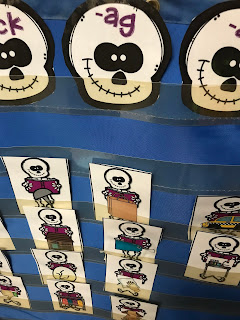When I began teaching over 14 years ago, balanced literacy was in full swing. Immersing children into literacy, guided reading, and "look at the picture" strategies were very popular. About 5 years ago, my view of reading began to change. My son, who is now 10, entered Kindergarten as a struggling student. I knew that he was very creative and was able to imagine amazing things. However, he was hyper-active(like me) and did not care for school. After the first 9 weeks, his teacher, one of my teacher besties, stated that he was not learning/applying the alphabetic principle like he should. He was then put into RTI for Literacy. He made small gains, but always seemed to be "behind". A long story short-a couple of years go by and I decide to have him tested for dyslexia. Come to find out, he did qualify. I began to do extensive research and began my MSE in Literacy with a Dyslexia Endorsement through a well-known university in my state. My son has been receiving "Take Flight" for a year and a half now and has made tremendous gains. He is now in 5th grade and is finally on grade level. All that to be said, the Science of Reading has really come to reality, and has shown much insight to the field of education.
I know that the Science of Reading can seem overwhelming, but just know that it really describes and proves how a child learns to read. Learning to read is not natural like learning to speak. The brain is an amazing organ. I had no clue as to what the human brain was capable of until I began training on the SoR(Science of Reading). I want to note, before I go any further, that I am not a doctor or have any certification as such. I am just an elementary educator with a passion for teaching students to read.
Now, let's get to the meat of this post. Here are 5 ways to implement the Science of Reading into your classroom.
Tip #1-Replace your guided reading books for decodable books.
If you are in the primary grades (K-2), your students need to be exposed to text that they can decode. Readily practice reading decodable readers should be an every day occurrence. Here is a link for a free decodable text resource. Have you heart of ReadWorks? I have used them for years for comprehension, but recently, they have created decodable text for grades K-1. Click on the text below to check them out! You will need to create a FREE account to access the content.
Readworks Decodable Text
Tip #2 Explicitly teach Heart Words
The Heart Word Curriculum has free videos for several heart words. I use these in my classroom every week. These videos teach students the different parts of the words and specifically hones in on the irregularity by marking them with a heart. This gives students a multi-sensory experience and they love these videos!
Tip #3 Replace the 3-Part Cueing system(asking them to look at the picture...) with teaching students decoding skills Here is a great article from Reading Rockets that explains decoding and what parents/teachers can do to help with it. Click the image below to read more.
For primary students, teaching them to:
Tip #4 Add to your Background Knowledge Repertoire
Students need to be able to connect with a text. This requires them to be more knowledgeable about the world around them.
*Graphic organizers, are a great way for students to organize their thoughts and new material.
*Visuals-keep in mind that students need to multiple ways of being exposed to a new topic. One way for them to connect, is using a visual cue of some sort.
*Virtual field trips are also a great tool to use. Virtual field trips have become more popular in the last few years. There are so many now. For example, if you are teaching a unit on polar animals, many zoos offer a free webcam service to let your students observe their animals, just like you were actually there. The San Diego Zoo is one that I use a-lot.
San Diego ZooTip #5 Attend Professional Development
There are many free and paid webinars and in-person events to help you learn more about the Science of Reading. There is much that I do not know still, I'm learning every day! Some valuable resources are
Some great books to pick up:
There is so much more to the SoR, but hopefully, you have some helpful tools to get you started!









































